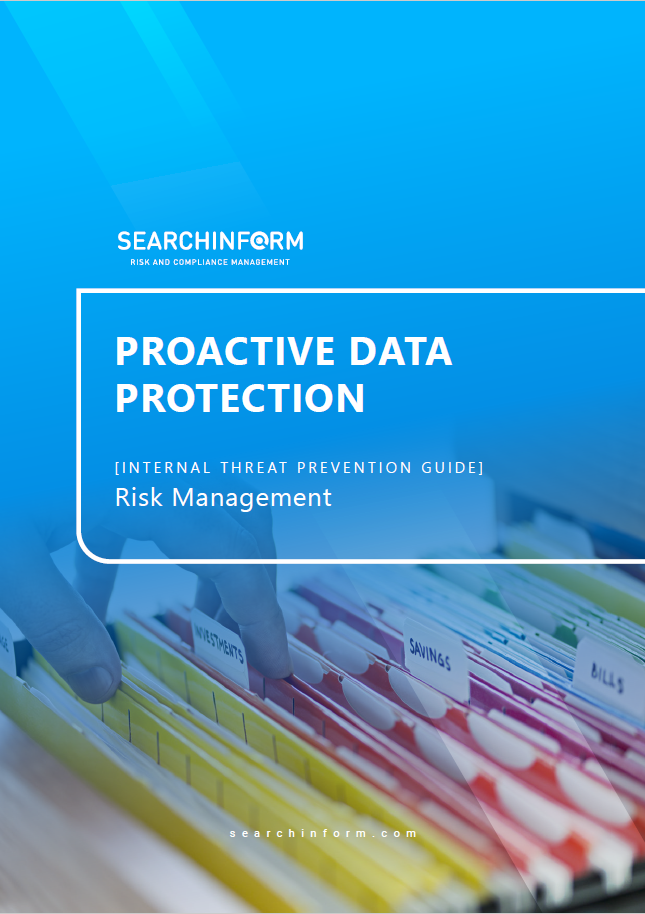How to Conduct an Effective Risk Management Audit
- What is a Risk Management Audit?
- Why Risk Management Audits Are Critical for Businesses
- Uncovering Operational Weaknesses
- Mitigating Financial Risks
- Protecting Reputations in the Digital Age
- Legal and Regulatory Compliance
- The Enron Lesson: A Cautionary Tale
- A Strategic Advantage
- Bridging the Gap to Proactive Risk Management
- Steps to Conduct a Comprehensive Risk Management Audit
- Pre-Audit Planning: Setting the Stage for Success
- Risk Identification and Assessment: Uncovering the Invisible
- Data Collection and Analysis: The Backbone of Insight
- Reporting and Action Plans: Turning Findings into Solutions
- Building the Framework for Continuous Improvement
- Tools and Technologies for Risk Management Audits
- Risk Assessment Tools: Identifying the Unknown
- Audit Management Software: Simplifying Complexity
- Artificial Intelligence and Automation: The Game-Changers
- Real-World Examples: Technology in Action
- Bridging Human Expertise and Technology
- The Next Evolution in Risk Management
- Common Challenges in Risk Management Audits and How to Overcome Them
- Resource Constraints: Doing More With Less
- Gaps in Internal Controls: The Invisible Risks
- Emerging Threats: Keeping Pace With Change
- Bridging the Communication Gap
- Lessons Learned: Turning Challenges Into Opportunities
- SearchInform’s Role in Risk Management Audits
- Comprehensive Solutions Tailored to Your Needs
- Case Studies: Success in Action
- A Seamless Integration Into Existing Frameworks
- Building a Stronger, Safer Future
In today’s dynamic business environment, uncertainty is a constant. From internal inefficiencies to external threats, organizations face risks that can disrupt operations, damage reputations, and erode profitability. A risk management audit offers a structured approach to identifying, evaluating, and mitigating these risks, ensuring the organization remains prepared and resilient.
What is a Risk Management Audit?
A risk management audit serves as a systematic review of an organization’s processes to identify, assess, and mitigate risks. Think of it as a health check for your business’s risk framework. Its purpose? To ensure that the measures in place are not just theoretical but effective in practice.
The process examines everything from compliance with regulatory standards to internal policies, identifying vulnerabilities that could lead to financial loss or reputational damage. While internal audits focus on maintaining internal controls and organizational standards, external audits bring in an impartial perspective, offering an unbiased evaluation of risks.
For instance, imagine a tech company relying heavily on customer data. An internal audit may reveal weak access controls, while an external one might highlight non-compliance with data protection laws. Together, these audits create a holistic view of risk, showcasing their critical role in safeguarding businesses. But what makes risk management audits indispensable in today’s fast-paced, high-stakes environment? Let's explore why they are pivotal to business success.
Why Risk Management Audits Are Critical for Businesses
Imagine a bustling restaurant where the chef never checks the freshness of ingredients or the temperature of the fridge. Everything may seem fine—until a food safety inspector shuts the place down. Businesses, much like that restaurant, cannot afford to assume that everything is under control. A risk management audit serves as their "inspection," uncovering hidden vulnerabilities before they escalate into crises.
The risks businesses face today are as varied as they are unpredictable. A sudden shift in market trends might wipe out a product line’s relevance overnight. A minor software misconfiguration could open the floodgates to a cyberattack. Operational hiccups, financial mismanagement, and reputational damage loom around every corner. The value of an audit for risk management lies in its ability to navigate these treacherous waters.
Uncovering Operational Weaknesses
Risk management audits act as a magnifying glass, revealing inefficiencies in processes that may go unnoticed during day-to-day operations. For example, a logistics company might discover that its fleet tracking system is outdated, leading to delayed deliveries and dissatisfied clients. By identifying this gap, the company can implement a more efficient solution, ensuring smoother operations and happier customers.
Mitigating Financial Risks
The financial implications of unchecked risks can be devastating. Fraud, embezzlement, or even simple accounting errors can snowball into significant losses. In one real-world case, a multinational corporation suffered a $2 billion loss when internal auditors failed to spot discrepancies in financial reports. A robust risk management audit would have flagged these issues early, allowing the company to course-correct before the damage was done.
Protecting Reputations in the Digital Age
Reputation has always been a cornerstone of business success, but in today’s hyper-connected world, it can be destroyed in an instant. A single cybersecurity breach, for example, could lead to leaked customer data and a media frenzy. Consider the 2017 Equifax breach, which compromised the data of 147 million people. The fallout included public outrage, lawsuits, and a tarnished brand image. Regular audits can prevent such scenarios by ensuring vulnerabilities are addressed before attackers exploit them.
Legal and Regulatory Compliance
Beyond operational and financial risks, businesses must navigate a maze of legal and regulatory requirements. Non-compliance isn’t just costly—it’s a reputational minefield. Take GDPR violations as an example: companies that fail to secure customer data face hefty fines and damaged consumer trust. A risk management audit ensures compliance by examining policies, procedures, and controls against the latest regulations, safeguarding businesses from both penalties and bad press.
The Enron Lesson: A Cautionary Tale
Perhaps one of the most infamous cases highlighting the importance of a risk management audit is the collapse of Enron. This energy giant, once valued at billions, crumbled due to fraudulent accounting practices that went unchecked for years. An effective audit for risk management could have uncovered the financial misreporting early, saving thousands of jobs and billions in investments. Instead, its downfall became a textbook example of how ignoring audits can lead to catastrophic failure.
A Strategic Advantage
Risk management audits are not just about identifying problems; they’re about positioning businesses for success. Companies that regularly conduct these audits demonstrate transparency and reliability to stakeholders, earning trust and loyalty. In competitive markets, this can be the edge that sets a company apart. For instance, a fintech startup that proactively addresses cybersecurity risks through regular audits can attract risk-averse investors, solidifying its position as a trustworthy innovator.
Bridging the Gap to Proactive Risk Management
The benefits of risk management audits are undeniable. They help businesses anticipate, address, and even capitalize on risks, turning potential threats into opportunities for growth. But achieving these outcomes depends on more than just identifying vulnerabilities—it requires a structured, methodical approach. So, how does a business transform a risk management audit from a diagnostic tool into a roadmap for action? Let’s explore the essential steps that ensure audits not only uncover risks but also empower organizations to mitigate them effectively.
Steps to Conduct a Comprehensive Risk Management Audit
Pre-Audit Planning: Setting the Stage for Success
Every great journey starts with a plan, and a risk management audit is no different. Pre-audit planning is where the scope, objectives, and priorities are defined. Without it, audits risk becoming unfocused and ineffective.
Consider a financial institution aiming to evaluate its cybersecurity defenses. In the planning phase, auditors might identify key areas of concern, such as customer data protection or compliance with regulations like GDPR. Clear objectives ensure that the audit targets the most critical aspects, rather than getting lost in minutiae.
Engaging stakeholders during this stage is vital. When managers, IT teams, and compliance officers collaborate, the audit becomes a shared mission rather than an external imposition. Their insights into day-to-day risks and operational bottlenecks enrich the planning process and set the tone for actionable outcomes.
Risk Identification and Assessment: Uncovering the Invisible
The next step dives deep into understanding what could go wrong. Effective risk identification requires a blend of data analysis, interviews, and hands-on evaluations. Auditors often use frameworks like SWOT analysis or risk matrices to categorize risks by their likelihood and potential impact.
For instance, a manufacturing company might uncover supply chain risks during this phase. A closer look might reveal over-reliance on a single supplier or vulnerabilities to geopolitical disruptions. Identifying these risks allows businesses to develop contingency plans, such as diversifying suppliers or automating inventory management.
Data Collection and Analysis: The Backbone of Insight
Data drives every successful audit for risk management. This phase involves gathering both quantitative and qualitative information to build a comprehensive picture of the organization’s risk landscape. Whether it’s financial records, system logs, or customer feedback, every data point matters.
But data alone isn’t enough. Analysis is where the real magic happens. For example, in a healthcare organization, auditors might analyze system access logs to detect unusual patterns—like an employee accessing patient records outside their role. Such anomalies could point to potential data breaches or misuse, enabling the organization to take swift corrective action.
Reporting and Action Plans: Turning Findings into Solutions
Once the data has been dissected, the audit’s findings must be presented in a way that drives action. This step is about more than listing risks—it’s about offering solutions. A good risk management audit report prioritizes risks, explains their potential impact, and outlines clear steps for mitigation.
Imagine a tech startup receiving an audit report highlighting gaps in its intellectual property protection. A well-crafted report wouldn’t just flag the problem; it would recommend specific actions, such as implementing stronger access controls, encrypting sensitive data, or conducting employee training.
Effective reporting also means tailoring the message to the audience. While executives might focus on high-level risks and their financial implications, operational teams need granular insights to guide day-to-day decisions. Balancing these perspectives ensures the audit’s recommendations are both understood and implemented.
Building the Framework for Continuous Improvement
The steps of a risk management audit don’t end with a report. They form the foundation for ongoing risk management practices. Businesses that treat audits as one-time events miss the opportunity to build a culture of resilience. Incorporating audit findings into long-term strategies, regularly reviewing and updating risk frameworks, and fostering a mindset of vigilance ensure that organizations stay prepared for whatever the future holds.
But how can businesses amplify the efficiency of their audits and stay ahead of emerging risks? The role of technology in risk management audits is the next frontier, revolutionizing the way organizations identify, assess, and mitigate vulnerabilities. Let’s delve into how tools like AI, automation, and advanced software are reshaping the audit landscape.
Tools and Technologies for Risk Management Audits
In the past, a risk management audit was largely a manual endeavor—piles of paperwork, tedious data sorting, and painstaking analysis. Today, technology has revolutionized the process, turning it into a faster, smarter, and more reliable approach. Think of it as upgrading from a horse-drawn carriage to a sleek, self-driving car. Tools and technologies now streamline every aspect of an audit for risk management, making it not only more efficient but also more insightful.
Risk Assessment Tools: Identifying the Unknown
Imagine trying to solve a puzzle in the dark. That’s what identifying risks can feel like without the right tools. Risk assessment software acts like a flashlight, illuminating hidden threats. For example, a multinational retailer might use a platform that maps its entire supply chain to pinpoint vulnerabilities—such as over-reliance on suppliers in politically unstable regions.
These tools go beyond mere identification. They quantify risks, assigning probabilities and potential impacts that help organizations prioritize what to address first. This is particularly useful in industries where a single oversight can lead to catastrophic consequences, like finance or healthcare.
Audit Management Software: Simplifying Complexity
Conducting a risk management audit is akin to orchestrating a symphony. There are multiple moving parts—data collection, stakeholder input, compliance checks—and any misstep can throw the entire process off-key. Audit management software keeps everything in harmony.
Picture a mid-sized tech company juggling compliance requirements across multiple regions. An audit management platform can centralize all their documentation, set automated reminders for upcoming deadlines, and provide real-time dashboards that track progress. This ensures no detail is overlooked, and the audit remains on schedule.
One standout feature of these platforms is workflow automation. By eliminating repetitive tasks, they free up auditors to focus on strategic analysis, adding depth and value to the process.
Artificial Intelligence and Automation: The Game-Changers
AI has transformed how organizations approach risk management audits. With its ability to analyze vast datasets at lightning speed, AI uncovers patterns and anomalies that human auditors might miss. For instance, a bank might deploy AI to monitor transaction logs for unusual activity, flagging potential cases of fraud before they escalate.
Automation also plays a crucial role. It’s not just about speeding things up—it’s about improving accuracy. A healthcare provider, for example, can use automation to cross-check thousands of patient records against compliance standards, reducing the risk of human error.
But the real power of AI lies in its predictive capabilities. By analyzing historical data, it can forecast potential risks, giving businesses a head start in addressing them. This shifts the focus of an audit for risk management from reactive to proactive, allowing organizations to prepare for challenges before they arise.
Real-World Examples: Technology in Action
Consider a global manufacturing firm grappling with cybersecurity risks. Using a combination of risk assessment software and AI-driven analytics, the company identifies vulnerabilities in its network defenses. The tools don’t just highlight problems—they recommend specific solutions, like upgrading firewalls or implementing multi-factor authentication.
Or take the example of a nonprofit organization struggling with donor fraud. With audit management software, they streamline their financial review process, identifying inconsistencies that point to fraudulent activities. These insights not only protect their funds but also rebuild trust with stakeholders.
Bridging Human Expertise and Technology
While tools and technologies are indispensable, they’re not a substitute for human expertise. The best audits combine cutting-edge technology with the nuanced understanding of experienced professionals. For instance, an AI system might flag an anomaly in financial data, but it takes an auditor’s judgment to determine whether it’s an actual risk or a benign irregularity.
This synergy between humans and machines creates a robust risk management framework, ensuring audits are both comprehensive and actionable.
The Next Evolution in Risk Management
As technology evolves, so does the potential for even more sophisticated risk management audits. Blockchain, for instance, is poised to revolutionize data integrity, offering tamper-proof records that enhance transparency. Meanwhile, advancements in predictive analytics promise to take risk forecasting to unprecedented levels.
But with every innovation comes new challenges. How do businesses adapt to emerging risks while leveraging these tools effectively? The journey doesn’t end with technology—it’s just the beginning of a larger conversation about overcoming obstacles in risk management audits. Let’s dive deeper into the common challenges auditors face and explore strategies to conquer them.
Common Challenges in Risk Management Audits and How to Overcome Them
No matter how advanced the tools or meticulous the preparation, every risk management audit inevitably encounters hurdles. These challenges, though frustrating, often provide valuable insights into the organization’s risk landscape. Successfully navigating them can turn obstacles into opportunities, strengthening both the audit process and the business itself.
Let’s consider a mid-sized e-commerce company that recently conducted a risk management audit to address growing cybersecurity concerns. Despite employing state-of-the-art software, the company faced unexpected roadblocks: limited resources, gaps in internal controls, and difficulty addressing emerging threats. These issues are not uncommon and highlight why the human aspect of an audit for risk management is just as critical as the technical side.
Resource Constraints: Doing More With Less
Audits are resource-intensive. They demand time, skilled personnel, and often significant financial investment. For smaller businesses or organizations already operating on tight budgets, this can feel like an insurmountable barrier. Imagine a nonprofit organization struggling to allocate enough staff to conduct a thorough audit while juggling its mission-critical programs.
The solution lies in prioritization and efficiency. Focus on high-risk areas first. For instance, if the nonprofit relies heavily on donor databases, start by assessing data protection measures. Leveraging automation and outsourcing specific tasks to third-party experts can also reduce the burden on internal teams without compromising the quality of the audit.
Gaps in Internal Controls: The Invisible Risks
A well-designed internal control system acts as the backbone of risk management, yet many organizations discover during audits that their controls are either outdated or insufficient. Take the case of a manufacturing company whose risk management audit revealed a lack of segregation of duties in its procurement process. This oversight not only exposed the company to fraud but also highlighted broader weaknesses in operational discipline.
Closing these gaps requires both immediate action and long-term planning. The manufacturing company could start by assigning procurement oversight to a dedicated team while simultaneously redesigning workflows to prevent similar vulnerabilities in the future. Regularly revisiting and updating internal controls ensures they evolve alongside the organization’s needs.
Emerging Threats: Keeping Pace With Change
The speed at which new risks emerge is staggering. Cyber threats, for example, evolve almost as quickly as defenses are developed. A healthcare provider might find that its audit uncovers vulnerabilities related to ransomware—an issue that wasn’t even on its radar a few years ago.
Addressing these challenges requires agility and foresight. Incorporate continuous monitoring into your risk management strategy, so threats can be identified in real time. Partnering with cybersecurity experts and investing in ongoing staff training can also help organizations stay ahead of emerging risks. For example, teaching employees how to recognize phishing attempts can drastically reduce an organization’s exposure to cyberattacks.
Bridging the Communication Gap
Another frequent challenge is ensuring that audit findings are communicated effectively. A risk management audit may uncover critical issues, but if these insights aren’t presented in a way that resonates with decision-makers, they risk being ignored.
Consider a retail chain that receives an audit report filled with dense technical jargon. The leadership team might fail to grasp the urgency of certain cybersecurity risks, delaying necessary action. To avoid this, audit reports should be tailored to their audience. Use clear language, impactful visuals, and relatable examples to convey the importance of addressing each risk.
Lessons Learned: Turning Challenges Into Opportunities
Every challenge in a risk management audit presents an opportunity to refine and improve. When resource constraints force an organization to focus on its most critical risks, it often leads to deeper insights and more impactful solutions. When gaps in internal controls are exposed, they become a roadmap for building stronger, more resilient processes.
But overcoming these obstacles is only half the battle. What truly sets organizations apart is their ability to adapt and thrive in the face of new challenges. How do they evolve their audit practices to keep pace with an ever-changing risk landscape? The answer lies in adopting cutting-edge strategies, innovative technologies, and forward-thinking mindsets.
and perform with SearchInform DLP:
This journey of transformation is one that organizations like SearchInform have mastered. By providing tailored solutions and empowering businesses to address their unique challenges, SearchInform bridges the gap between theoretical risk management frameworks and practical, actionable results. So, how exactly does SearchInform help organizations navigate the complexities of risk management audits? Let’s explore the tools, techniques, and success stories that make it a trusted partner in the field.
SearchInform’s Role in Risk Management Audits
When it comes to navigating the complexities of risk management audits, organizations often struggle to balance thoroughness with efficiency. The task of identifying risks, analyzing vulnerabilities, and creating actionable solutions can feel like an insurmountable challenge. This is where SearchInform steps in, offering an array of tools and services designed to simplify and enhance every stage of the audit for risk management.
Comprehensive Solutions Tailored to Your Needs
SearchInform provides a suite of integrated solutions that address the multifaceted demands of risk management audits. These tools are designed not just to identify risks but to provide actionable insights and facilitate long-term resilience. Here's how SearchInform stands out:
- Data Loss Prevention (DLP): A cornerstone of SearchInform’s offering, its DLP solutions ensure sensitive information remains protected, minimizing the risk of data breaches. Whether it’s safeguarding intellectual property or preventing insider threats, SearchInform's DLP tools are invaluable during audits.
- Risk and Incident Detection: SearchInform’s advanced systems monitor and detect unusual activities across networks, helping organizations identify potential vulnerabilities in real time. This proactive approach means risks are flagged early, reducing the chances of escalation.
- Audit Trail and Documentation Management: Auditors know the importance of a well-maintained audit trail. SearchInform simplifies this process, creating comprehensive records of all activities and decisions. This feature not only enhances audit accuracy but also ensures compliance with legal and regulatory standards.
- Analytics and Reporting: SearchInform’s tools take the guesswork out of risk analysis. By leveraging intelligent algorithms, they provide clear, data-driven insights that make it easier for decision-makers to understand and act upon audit findings.
Case Studies: Success in Action
SearchInform’s effectiveness becomes even clearer when you consider its real-world applications. Imagine a financial services firm overwhelmed by the complexity of its compliance obligations. By integrating SearchInform’s solutions into their audit processes, the company quickly identified gaps in its controls, implemented stronger data protection measures, and streamlined regulatory reporting.
Another example could be a healthcare provider facing challenges with patient data security. Through SearchInform’s DLP and incident detection tools, the organization uncovered weaknesses in its access controls and took immediate steps to mitigate risks. These adjustments not only bolstered security but also improved patient trust—a win-win outcome.
A Seamless Integration Into Existing Frameworks
One of the most compelling aspects of SearchInform’s offerings is their flexibility. Organizations don’t have to overhaul their existing systems to benefit from these tools. Instead, SearchInform integrates seamlessly into existing risk frameworks, amplifying their effectiveness.
This adaptability is particularly valuable for industries with highly specific needs, such as finance, manufacturing, or retail. By customizing its solutions to align with each organization’s unique risk profile, SearchInform ensures that no stone is left unturned during a risk management audit.
Building a Stronger, Safer Future
SearchInform’s role in risk management audits isn’t just about mitigating risks—it’s about empowering businesses to build stronger, more secure operations. By combining cutting-edge technology with deep expertise, SearchInform transforms the daunting task of auditing into an opportunity for growth and resilience.
The question isn’t whether you can afford to invest in tools like those offered by SearchInform. It’s whether you can afford not to. Risks are evolving faster than ever, and staying ahead requires more than reactive measures. Now is the time to take control of your organization’s future.
Ready to elevate your risk management strategy? Take the first step today with SearchInform—the partner you can trust to secure your success.
Full-featured software with no restrictions
on users or functionality
Company news
SearchInform uses four types of cookies as described below. You can decide which categories of cookies you wish to accept to improve your experience on our website. To learn more about the cookies we use on our site, please read our Cookie Policy.
Necessary Cookies
Always active. These cookies are essential to our website working effectively.
Cookies does not collect personal information. You can disable the cookie files
record
on the Internet Settings tab in your browser.
Functional Cookies
These cookies allow SearchInform to provide enhanced functionality and personalization, such as remembering the language you choose to interact with the website.
Performance Cookies
These cookies enable SearchInform to understand what information is the most valuable to you, so we can improve our services and website.
Third-party Cookies
These cookies are created by other resources to allow our website to embed content from other websites, for example, images, ads, and text.
Please enable Functional Cookies
You have disabled the Functional Cookies.
To complete the form and get in touch with us, you need to enable Functional Cookies.
Otherwise the form cannot be sent to us.

Subscribe to our newsletter and receive a bright and useful tutorial Explaining Information Security in 4 steps!

Subscribe to our newsletter and receive case studies in comics!








